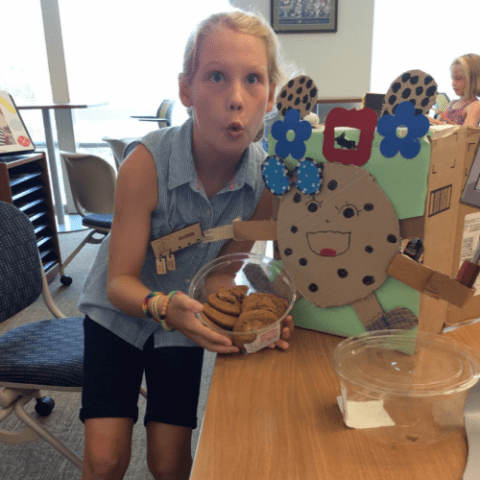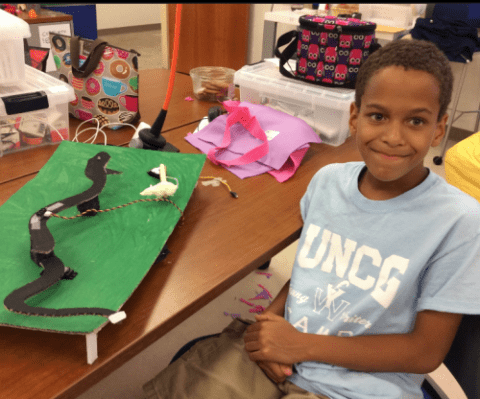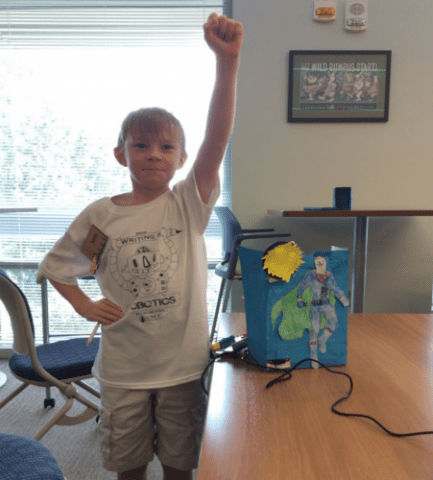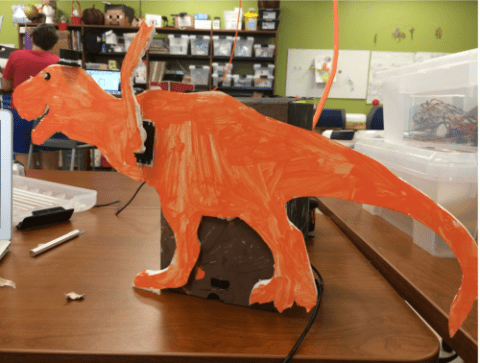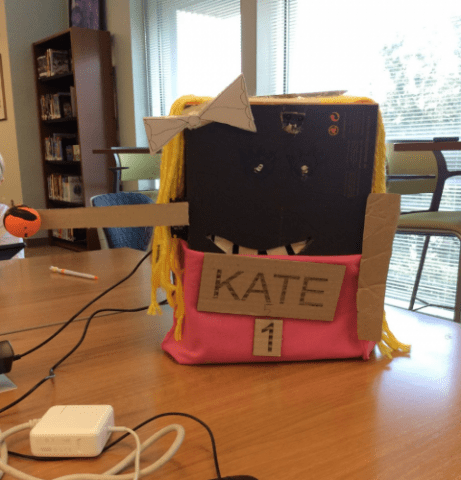Register to receive free access to all teacher materials.
Writing and Robotics
Students use the Hummingbird to illustrate a work of fiction or nonfiction that they create.
Created By
University of North Carolina at Greensboro (UNCG) run by the SELF Design Studio
Programming Language
Any language supported by Hummingbird Duo
Subjects
Language Arts
Grades
4-5, 6-8
Objective & Learning Goals
Students will be able to …
- Explain how the robot functions, is engineered, and is programmed.
- Explain how the robot ties into their story.
- Demonstrate problem solving skills.
- Integrate various types of technology with the liberal arts.
- Write basic programs using Snap! or BirdBlox.
- Use technology to tell a story or represent a character.
- Turn abstract concepts into physical objects and actions.
Standards
In the UNCG Young Writers’ Camp, students create their own works of fiction or nonfiction; this camp is aligned with Common Core ELA anchor standards in writing (including CCRA.W.3, CCRA.W.4, CCRA.W.6, and CCRA.W.10) and language (including CCRA.L.1 and CCRA.L.2). The Writing and Robotics camp also incorporates oral and multimedia presentations, which meet ELA anchor standards in speaking and listening (CCRA.SL.3-CCRA.SL.6). At the middle and high school levels, this project provides opportunities for students to narrate technical procedures (CCSS.ELA-LITERACY.WHST.2) and express technical information visually (CCSS.ELA-LITERACY.RST.7). Finally, this project is aligned with the middle school engineering standards in the Next Generation Science Standards (MS-ETS1-2 and MS-ETS1-3).
Photo Gallery
Writing and Robotics is a week-long summer camp at the University of North Carolina at Greensboro (UNCG) run by the SELF Design Studio. Writing and Robotics is an elective add-on experience for participants of the UNCG Young Writers’ Camp, which is a morning camp that spans a two week period in July. In Young Writers’ Camp, students write and publish their own fiction or nonfiction work on the UNCG Young Writers’ Camp webpage. Participants in Writing and Robotics meet at the SELF Design Studio in the afternoons of the second week of Young Writers’ Camp. The campers use their writing samples from Young Writers’ Camp to design and build a robot based on their writing. In 2016, the camp will was facilitated by Lillian Carden and Matthew Fisher of the SELF Design Studio, and they were assisted by Anna Jordan, and Laura Salcedo. Student projects for 2016 are available on the Writing and Robotics webpage.
Lesson Procedures:
This project takes place over five afternoons at a camp. Students work individually to use the Hummingbird to illustrate a work of fiction or nonfiction that they produce at the UNCG Young Writers’ Camp.
Day 1: Introduction
Students are introduced to the goals of the project via an example robot and presentation. Students are also introduced to the components of the Hummingbird kit and to Snap! or BirdBlox. Students prepare for their projects by completing mini-challenges such as the following:
- Change a tri-color LED based on the value of the distance sensor.
- Make the servo move through a sequence of three angles (45°, 90°, 135°) when a sound is detected. The servo should remain at each angle for 3 seconds.
- Make a gear motor turn clockwise very fast for 10 seconds, stop for 3 seconds, and then turn counterclockwise slowly for 10 seconds. These actions should be triggered by the light sensor.
- Play a sound when the knob sensor (potentiometer) is turned.
Day 2: Planning
Students create storyboards and plans for their robots. They use the organizer below to consider what their project will look like, what it will do, and what supplies they will need. Each student must review their design with a staff member who asks questions to encourage them to elaborate their ideas. After their design is approved, a student can begin to create the robot.
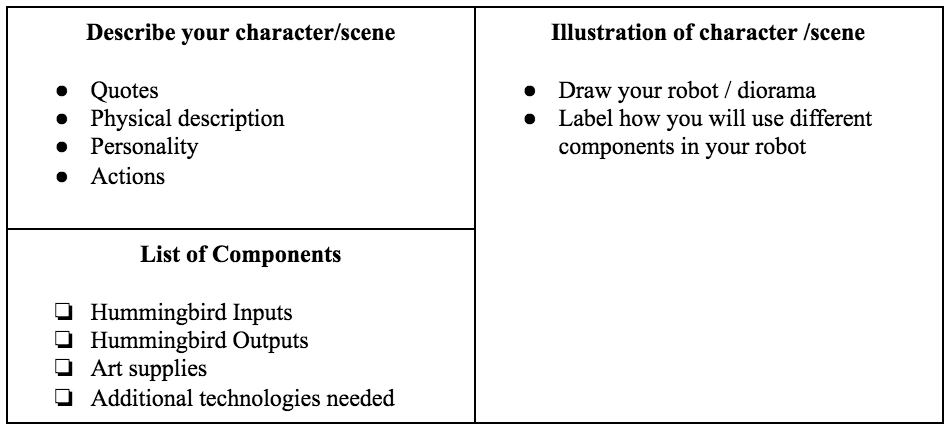
Day 3: Creating
Students work on building and programming their robots. Staff members assist with time management. In particular, they urge students to begin programming early in the process.
Day 4: Finishing
Students finish building and programming their robots. In addition, they create a short presentation that addresses the following questions:
- What does the robot do?
- What was your design/programming process?
- How does it relate to your story?
- What worked well?
- What was hard?
- What did you learn?
Day 5: Presenting
Students present their robots at Young Writers’ Camp and to visitors. They preserve their work by creating videos of their robots. In 2016, students also presented their work to the public at a local bookstore.

